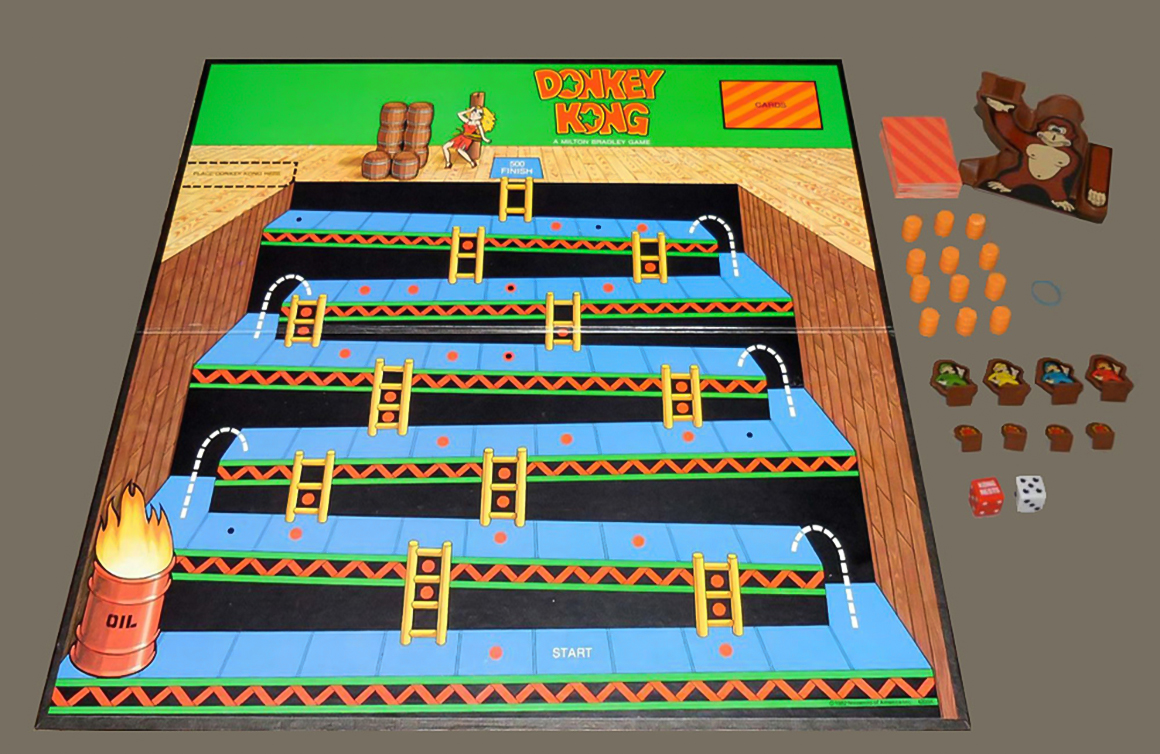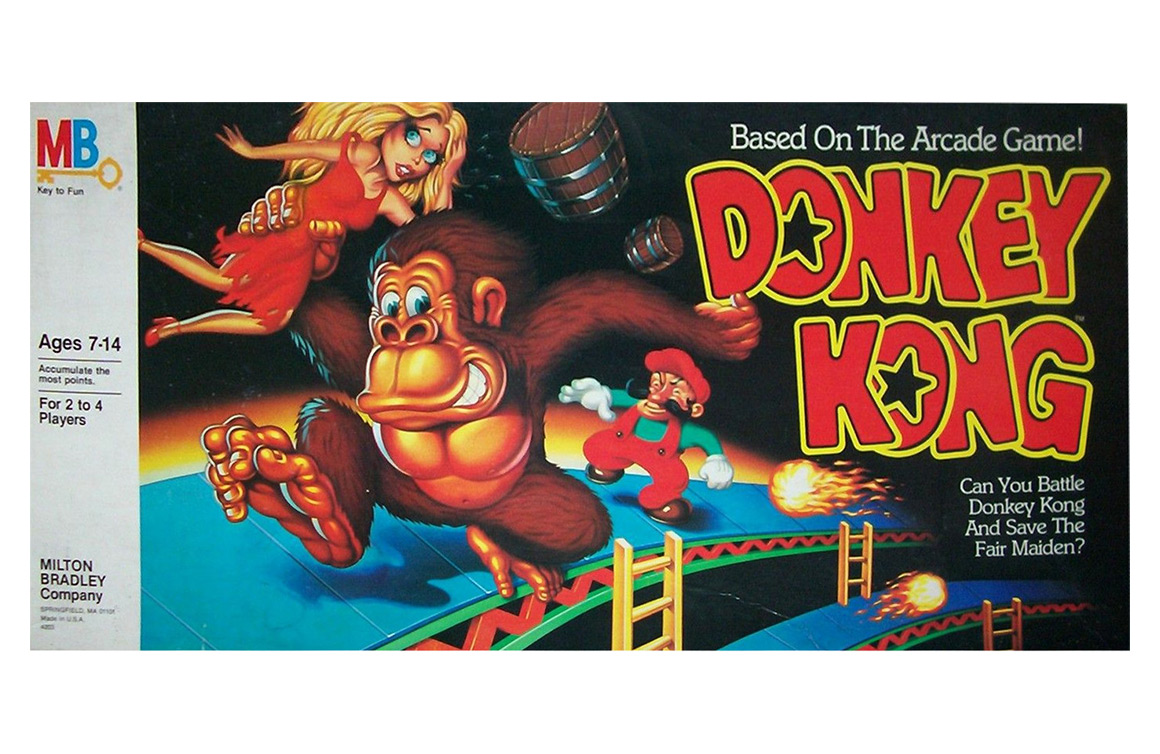“The family version of the arcade game.”
Released in 1982 by Milton Bradley, the Donkey Kong board game mirrors the storyline, characters, and obstacles of the Nintendo video game that inspired it.
The Donkey Kong video game, first released in 1981, featured a fearless carpenter named Mario scaling a construction site in an effort to rescue Pauline from a gorilla named Donkey Kong, dodging threatening obstacles along the way. Since that time, the Donkey Kong franchise has evolved to include video games, television series, films, comics, toys, and games.
GAMEPLAY
The game board depicted colourfully illustrated construction site complete with the girders and ladders familiar to those who have played the video game.
Three action cards illustrated with Mario and a point value were dealt to each player and kept face up. The remainder of the deck was placed facedown on the board. The plastic Donkey Kong figure was clipped to the top of the board. The figure was loaded with plastic barrels that were dropped down its right arm and released when the left arm was pressed down.
Each player placed their Mario pawn on the start position at the bottom of the board. High roll started the game.
Both the white and the red dice were rolled at the same time. Players moved their pawns up the board based on the number rolled on the white dice. The red dice included sides with either pips or “Kong Rests”. If “Kong Rests” was rolled, no action was taken. As in the video game, Mario encountered obstacles on his mission to rescue Pauline. If a numerical value was rolled on the red dice, the barrels descended the board by that count while the fireballs ascended the board by that same count.
Action cards came into play as the barrels and fireballs landed on a space occupied by a player. Mario was pictured on the action cards either jumping (to avoid fireballs) or with a hammer in hand (to smash barrels). Once the card was used, it was placed face-down beside the player. Cards were earned as players moved along the board. As a player’s turn ended, they pressed Donkey Kong’s left arm to release a new barrel onto the game board.
Unlike the video game that inspired it, Mario didn’t die during gameplay, making the board game a little friendlier for young players.
The game ended when the first player reached Pauline at the top of the board and that player earned a 500-point bonus. Players tallied the points on their cards earned by jumping and hammering. The player with the highest score won the game.
IN THE BOX
A complete game included a game board, one plastic Donkey Kong figure, four Mario pawns (blue, yellow, red, green), four fireball tokens, 12 barrels, a deck of 48 action cards, one red dice, one white dice, one sheet of labels, and two rubber bands. An instruction booklet was also included.
COLLECTOR CONSIDERATIONS
The plastic Donkey Kong figure relied on a rubber band to move the barrel-dropping arm. With time and use, the rubber band degraded and the figure stopped working. Collectors shouldn’t be deterred — the fix to a malfunctioning arm can be as straightforward as popping apart the two pieces of the figure and replacing the band.
Read Computer to Cardboard: Video Game-themed Board Games written by Nicolas Ricketts of The Strong National Museum of Play to discover more board game interpretations of popular video games.
Note: If you buy something using the eBay link in this story, we may earn a small commission. Thank you for supporting independent toy journalism!


